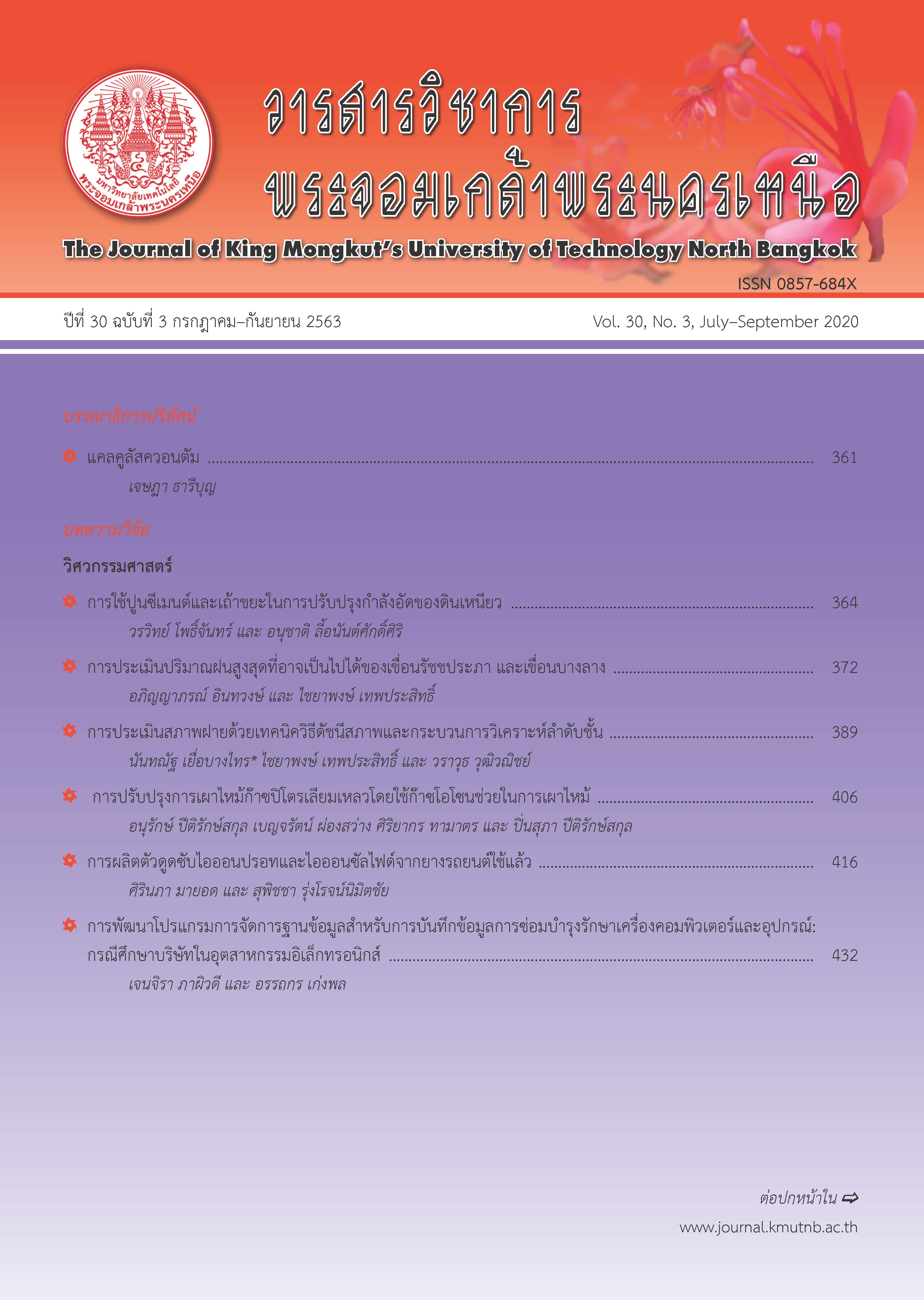แคลคูลัสควอนตัม
Main Article Content
บทคัดย่อ
ความเจริญก้าวหน้าทางวิทยาศาสตร์และเทคโนโลยีในปัจจุบัน ล้วนแล้วแต่มีคณิตศาสตร์อยู่เบื้องหลังทั้งสิ้น เห็นได้ชัดว่า หลังจากการค้นพบแคลคูลัสของเซอร์ ไอแซก นิวตัน (ค.ศ. 1643–1729) และกอทท์ฟรีด วิลเฮล์ม ไลบ์นิทซ์ (ค.ศ. 1946–1719) นำไปสู่การค้นพบและอธิบายปรากฏการณ์ทางธรรมชาติต่างๆ ซึ่งโดยสาระสำคัญของแคลคูลัส คือ การศึกษาการเปลี่ยนแปลงและการเคลื่อนที่ ทำให้นักวิทยาศาสตร์สามารถอธิบายการตกลงสู่พื้นโลกของวัตถุ การทำงานของเครื่องจักรกล การไหลของของเหลว การขยายตัวของก๊าซการเติบโตของพืชและสัตว์ รวมถึงการกวัดแกว่งของผลกำไรเป็นต้น
การศึกษาปรากฏการณ์ต่างๆ นั้น สามารถทำได้โดยการสร้างความสัมพันธ์ของสมการคณิตศาสตร์ หรือแบบจำลองทางคณิตศาสตร์ ซึ่งส่วนใหญ่จะอยู่ในรูปของสมการเชิงอนุพันธ์ทั้งสมการเชิงอนุพันธ์สามัญและสมการเชิงอนุพันธ์ย่อย แต่ในบางปรากฏการณ์ที่การวัดข้อมูลไม่สามารถวัดได้อย่างต่อเนื่องข้อมูลวิยุต (Discrete Data) เหล่านี้ ไม่สามารถนำมาสร้างแบบจำลองทางคณิตศาสตร์ด้วยสมการเชิงอนุพันธ์สามัญหรือสมการเชิงอนุพันธ์ย่อยได้ จึงทำให้นักคณิตศาสตร์พัฒนาแคลคูลัสขึ้นมาอีกสาขาหนึ่งเรียกว่า แคลคูลัสเชิงผลต่าง (Difference Calculus) ซึ่งเป็นเครื่องมือสำคัญในการสร้างแบบจำลองทางคณิตศาสตร์จากข้อมูลวิยุต โดยแบบจำลองดังกล่าวจะอยู่ในรูปของสมการผลต่างที่มีตัวแปรเวลาอยู่ในเซตของจำนวนเต็ม
Article Details
บทความที่ลงตีพิมพ์เป็นข้อคิดเห็นของผู้เขียนเท่านั้น
ผู้เขียนจะต้องเป็นผู้รับผิดชอบต่อผลทางกฎหมายใดๆ ที่อาจเกิดขึ้นจากบทความนั้น
เอกสารอ้างอิง
[2] R. D. Carmichael, “The general theory of linear q-difference equations,” American Journal of Mathematics, vol. 34, no. 2, pp. 147–168, 1912.
[3] T. E. Mason, “On properties of the solution of linear q-difference equations with entire function coefficients,” American Journal of Mathematics, vol. 37, no. 4, pp. 439–444, 1915.
[4] C. R. Adams, “On the linear ordinary q-difference equation,” Annals of Mathematics, vol. 30, no. 2, pp. 195–205, 1929.
[5] W. J. Trjitzinsky, “Analytic theory of linear q-difference equations,” Acta Mathematica, vol. 61, pp. 1–38, 1993.
[6] V. Kac and P. Cheung, Quantum Calculus. Springer-Verlag, Springer, 2002.
[7] V. Fock, “Zur theorie des wasserstoffatoms,” Zeitschrift fur Physik, vol. 98, no. 3–4, pp. 145–154, 1935.
[8] P. P. Raychev, R. P. Roussev, and Yu. F. Smirnov, “The quantum algebra SUq(2) and rotational spectra of deformed nuclei,” Journal of Physics G: Nuclear and Particle Physics, vol. 16, no. 8, pp. 137–141, 1990.
[9] H. Cheng, “Canonical quantization of Yang-Mills theories,” Perspectives in Mathematical Physics, International press, 1994.
[10] A. M. Gavrilik, “q-Serre relations in and 1q-deformed meson mass sum rules,” Journal of Physics A: Mathematical and General, vol. 27, no. 3, pp. 91–94, 1994.
[11] W. Siegel, Introduction to String Field Theory. World Scientific Publishing Co., 1988.
[12] T. Ernst, A Comprehensive Treatment of q-Calculus. Birkhauser, 2012.
[13] M. H. Annaby and Z. S. Mansour, q-Fractional Calculus and Equation. Springer, 2012.
[14] J. Tariboon and S. K. Ntouyas, “Quantum calculus on finite intervals and applications to impulsive difference equations,” Advances in Difference Equations, vol. 282, 2013.
[15] B. Ahmad, S. K. Ntouyas, and J. Tariboon, “Quantum calculus: New concepts, impulsive IVPs and BVPs, inequalities,” Trends in Abstract and Applied Analysis, vol. 4, Singapore: World Scientific, 2016.

